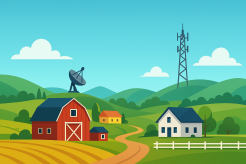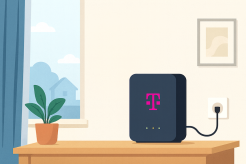Streaming vs. Cable: Which TV Service Truly Delivers the Better Experience?

Choosing between streaming and cable has become one of the biggest decisions for today’s TV viewers. Both options promise convenience, entertainment, and access to your favorite channels, yet the experience they deliver can vary widely. As viewing habits shift and technology evolves, the question becomes more relevant: Which TV service is better—streaming or cable?
In this comprehensive guide, we break down the strengths and weaknesses of both services to help you make a smart decision. This deep dive is crafted with clear, user-focused insights, keyword-rich structure, and an easy, natural flow that builds understanding from start to finish.
Why the Streaming vs. Cable Debate Matters Today
Entertainment isn’t just about watching shows anymore. It’s about how seamlessly content fits into your lifestyle. Whether you prefer flipping through traditional channels or tapping into endless digital libraries, the right choice affects your budget, flexibility, and overall experience.
With more households cutting the cord each year, streaming has become the modern contender. Still, cable TV remains a strong choice for live channels, sports, and consistent broadcast quality. Determining the “best” option depends on what matters most to you—pricing, picture quality, convenience, speed, or content variety.
This guide explores all angles, helping you find the perfect match for your viewing habits.
Understanding Streaming Services
Streaming services allow users to watch content through an internet connection rather than a physical cable line. From movies and series to documentaries and live channels, streaming libraries continue to expand with each passing year.
What Makes Streaming Popular?
Streaming’s rise is fueled by its flexibility and personalization. Viewers enjoy the ability to watch content wherever they go—on smart TVs, phones, tablets, or laptops. Subscription plans are typically more budget-friendly than cable bundles, and users can cancel or restart services anytime.
Benefits of On-Demand Convenience
Streaming’s greatest strength lies in its on-demand nature. You can instantly access thousands of shows and movies without waiting for scheduled programming. Episodes release in entire seasons, making binge-watching effortless.
Flexible Pricing Options
Most streaming platforms offer affordable monthly plans. Consumers can mix and match services based on specific interests—sports, family shows, international films, and more. This level of customization simply isn’t available with traditional cable.
Streaming for Viewers on the Go
Watch content anywhere, anytime, as long as you have a stable internet connection. Travel, downtime, and busy schedules don’t get in the way of your entertainment.
The Role of Internet Quality in Streaming
Streaming performance heavily depends on internet stability. Bandwidth, latency, and network congestion affect everything from video clarity to buffering speed.
Understanding Cable TV Services
Cable TV transmits channels through a dedicated coaxial or fiber-optic line. This method has been the traditional backbone of home entertainment for decades and still delivers consistent quality and dependable service.
What Makes Cable TV Reliable?
Cable TV maintains a reputation for stability. It doesn’t rely on unpredictable home Wi-Fi, meaning external factors rarely affect viewing quality. Shows and sports events play in real time with little to no delay.
Consistent Channel Lineups
Cable packages include carefully curated channel lists, from news and sports to lifestyle and movie channels. Viewers who love traditional browsing appreciate cable’s straightforward experience.
Access to Live Events
Cable remains the preferred choice for major sports fans. Its ability to deliver live broadcasts without lag holds strong appeal, especially when real-time accuracy matters.
No Internet Required
Cable works regardless of your home internet connection. This independence provides a level of reliability that streaming sometimes struggles to match.
Key Differences Between Streaming and Cable TV
Understanding how streaming stacks up against cable requires looking at the most important factors for modern viewers. Below, we explore the categories that influence the viewing experience.
1. Cost and Pricing Transparency
Streaming Wins for Budget Flexibility
Streaming services often cost significantly less than cable packages. Users can subscribe to several platforms and still stay under the cost of a typical cable bill. Plus, there are no long-term contracts.
However, multiple premium streaming subscriptions can add up quickly. The total cost ultimately depends on the variety of content you want.
Cable’s Bundles Can Get Expensive
Cable packages often include channels you don’t watch but still pay for. Some plans require contracts or installation fees. Bundled services—TV, phone, and internet—can further increase your monthly bill.
2. Content Variety and Personalization
Streaming Offers Vast Libraries
From classic films to the latest originals, streaming platforms provide unmatched variety. Users can curate their lineup based on preferences, making it easy to shape a highly personalized entertainment experience.
Cable Provides Stability and Routine
Cable channels offer scheduled programming, which some viewers prefer. The familiarity of scrolling through channels appeals to long-time TV users who enjoy routine viewing habits.
3. Streaming Quality vs. Broadcast Reliability
Cable Delivers Consistency
Because cable TV uses its own infrastructure, it avoids common issues tied to internet-based streaming. No buffering. No drop in quality due to Wi-Fi interference.
Streaming Depends on Your Network
While streaming platforms support HD and 4K resolution, performance relies heavily on internet quality. During peak hours, some networks slow down, affecting smooth playback.
Homes interested in optimizing viewing performance may explore how pay-per-minute streaming models work, particularly for users who prefer flexible watch time.
4. Flexibility and Portability
Streaming Is Built for Modern Lifestyles
Stream your favorite shows across multiple devices anytime you want. This makes streaming ideal for families with different viewing preferences.
Cable Is Limited to Home Viewing
While some cable providers offer mobile apps, these apps typically require your home subscription and may restrict certain channels outside your home network.
5. User Experience and Interface
Streaming Offers Smart Navigation
Streaming interfaces are designed for convenience. Personalized recommendations, watch histories, and advanced search tools help users discover content quickly.
Cable Offers Simplicity
Although cable interfaces have improved in recent years, their core navigation remains simpler. Some older viewers prefer a basic channel guide over digital recommendations.
Who Should Choose Streaming?
Streaming is a great fit if you value:
1. Flexible, Affordable Plans
You control how many services you subscribe to and can cancel any time.
2. On-Demand Viewing
Your favorite shows and movies are always available without waiting for scheduled broadcasts.
3. Multiple Device Access
Perfect for families who watch on multiple screens simultaneously.
4. Frequent Content Updates
Streaming platforms often premiere new series and movies every week.
This makes streaming ideal for younger viewers, renters, frequent travelers, and tech-savvy families.
Who Should Choose Cable TV?
Cable remains a strong choice if you prioritize:
1. Reliable Live Broadcasting
Sports fans, news watchers, and event-followers benefit from cable’s near-instant broadcast delivery.
2. Zero Internet Dependence
Even with network outages, cable continues performing as long as power is available.
3. Traditional Channel Surfing
Some viewers prefer the simple joy of browsing channels.
4. Familiar Viewing Experience
Perfect for households comfortable with traditional TV setups.
Which Is Better Overall?
The better option depends on your lifestyle:
- Choose streaming if you want flexibility, affordability, and a massive selection of on-demand content.
- Choose cable if you want dependable live channels, sports, and a stable broadcast without relying on internet performance.
For many households, a hybrid setup—streaming plus a lightweight cable or live TV plan—creates the perfect balance.
Final Thoughts
The debate between streaming and cable doesn’t have a universal winner. Both offer unique advantages that appeal to different viewing styles. The best choice is the one that aligns with your entertainment needs, tech habits, and budget.
Before deciding, think about how often you watch live events, your internet speed, how many devices you use, and which content matters most. Once you understand your priorities, the answer becomes clear.
Related Posts

Mon, Nov 24, 2025 5:05 PM
cheap internet plansCost of Internet in a New Home: What Every Mover Should Know
Discover the real cost of internet in a new home, including hidden fees, rural options, and budget-friendly plans for families.

Fri, Nov 21, 2025 7:39 AM
Internet BundlesTop Internet Providers for Small Businesses Today
Discover the top internet providers for small businesses, including Verizon, AT&T, Spectrum, Comcast, and Viasat. Compare speeds, features, pricing, and reliability to find the best connection for your business.

Fri, Nov 21, 2025 4:00 AM
Internet BundlesBest Rural Internet Providers in the US: What to Know Before You Choose
We have schedules, rates, and pricing for the top three big internet providers in rural America. Since few internet providers create networks in small towns, your internet choices in rural areas are minimal. In rural America, however, Xfinity, CenturyLink, and Viasat all provide internet access.

Wed, Nov 19, 2025 10:57 PM
Broadband InstallationHow to Set Up T-Mobile 5G Home Internet
Learn how to set up T-Mobile 5G Home Internet with a step-by-step guide. Includes placement tips, activation steps, speed testing, and troubleshooting advice.

Tue, Nov 18, 2025 12:00 AM
RegulationsKinetic by Windstream Data Caps: What You Really Need to Know
Get the facts about Windstream data caps, how they work, what limits apply, and what this means for your internet usage. Learn whether Windstream truly offers unlimited data and what to expect.